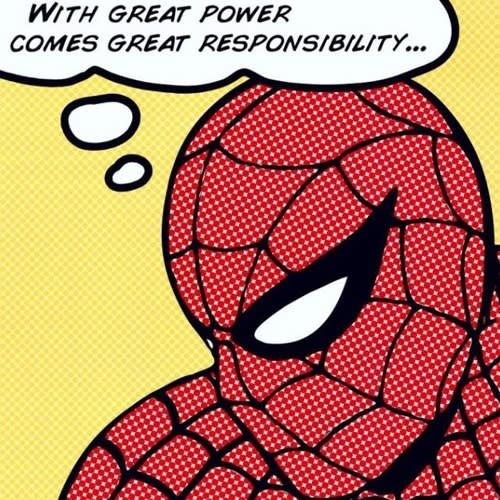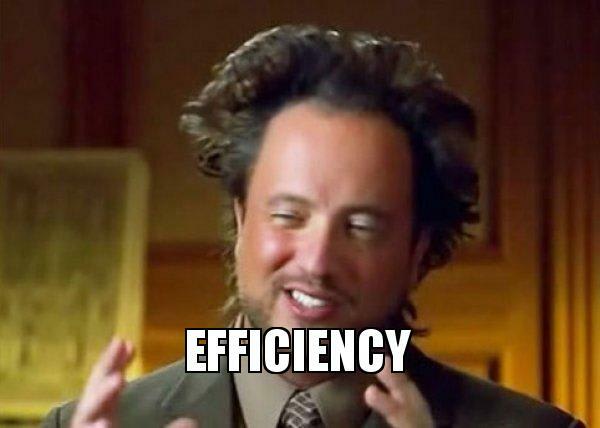PoS, web3 ...Why do I even bother ?
Web2 gave us social media, e-commerce and spearheaded a new chapter in our lives, but it does have drawbacks. Web2 applications are run on centralised servers (maybe distributed) completely owned and controlled by companies, the end users have to "Trust" the companies with their assets and data. Majority of giant corporations profit off their gigantic user base using an Ad based revenue model.
You get to use the service
and
Companies get your ⏳ + 🆔 = more 🤑🤑🤑🤑 for them.
If you aren't paying for the product, you are the product
This is what pushed Web3 and decentralisation into spotlight
Everybody owns their 🆔 + Community spends⏳ providing value = fair 🤑 for everyone involved
Eg: Products like Brave browser provide incentives for your time.
Basically giving the power of ownership and fair rewards back to the hands of the community.
But as they say:
It is paramount that we understand the underlying
mechanisms that facilitate such a power and take responsibility.
Okay, What is PoS ? Where is it used ?
Unlike centralised networks owned and operated by companies, nobody controls the nodes(computers) of a decentralised Crypto Network like Avalanche or Fantom; they are independent and spread across the globe in various time zones all running the protocol's software. So how do they coordinate and how does anything get done🤔?
Well we can do this with a universal record-keeping for the network. This is done via a blockchain (a digital chain of blocks each containing details about transactions on a network) which acts as an immutable, shared ledger (database) keeping the current state of the network. It is “the ultimate source of truth”_ and every node has a copy. Newer blocks are verified by the network and added to the chain.
Now how does the network ensure nodes are honest and there are no bad actors who try to include a malicious block for personal gain ? More importantly, how can the nodes trust each other ?
Enter Consensus mechanism; viz a protocol with which all nodes arrive at a general agreement about the current state of blockchain. They have built in financial incentives that make the system “Trustless” i.e nodes need not trust each other and “Code is law”.
PoS is one of such consensus mechanisms.
Got it, but how does it work ?
PoS blockchain is maintained by validators. To become a validator on the network, a node must lock up a minimum amount of the native cryptocurrency as a stake on the chain. This could be $NEAR for Near protocol or $ATOM for Cosmos etc.
When it's time to add a new block, the network selects a single validator node out of all.
To pick a validator node and to ensure everybody has a fair chance, protocol considers different factors such as:
the amount of coins staked
how long they have been staking
randomness
or a combination of many factors viz mentioned in their respective whitepapers.
Once a validator is selected,it checks all the transactions in the new block, signs and adds it to the blockchain.✅
As a reward 💰 for the hard work, it receives fees that are associated with all the transactions in the block. It is verified and fact checked by other validators. If some anomaly is revealed, a part of their stake (of the validator who added the block) is slashed as a penalty.❌

The general idea is that there is something at stake i.e “skin in the game”, so it's in the validators’ best interest to act truthfully and maintain the network because the rewards are less than what they staked.
If somebody no longer wishes to be a validator, their coins are released back only after a lock up period⏳.
Cool, why is it important ?
Before PoS we had Proof-Of-Work (PoW), in which every node (miners) in the network tried to solve a computationally expensive puzzle to get a chance to mine the next block and receive a block reward from the network.
Besides being a consensus mechanism viz backbone of blockchain network, PoS tries to overcome few disadvantages of PoW (Few reasons for ETH 2.0 going PoS)
Energy efficient: In PoS blockchains since only one validator chosen by the network validates, its far more efficient compared to PoW where every miner races to solve a computationally expensive puzzle but only one succeeds.Talk about environmentally friendly.
Network participation: PoW rewards those with more computational power;(hence solve the puzzle fastest) which also helps keep the network secure. In PoS, since computational power and hardware is not a criteria, anybody can become a validator. Those who are not a validator, can also delegate their crypto to validators and hence earn their share of rewards, improving network participation.
On Chain Governance: PoS blockchains can enable governance and provide stakers with the right to vote on proposals and participate in decision making to influence any changes in the network viz extremely difficult in PoW.
Conclusion: It's not a perfect solution
Technically, in PoS, a validator who owns a majority of the coins has a higher chance of controlling the network.
In PoS the rewards💰 are in form of transaction fees associated with each block, unlike PoW where the coin itself is mined in form of block rewards.
So PoS protocols have to "Pre-Mine a few coins beforehand, and there are chances that those who accumulate major portion at this stage will have an unfair advantage.
But for a mature network this is unlikely Eg: Near protocol at time of writing has a market cap of approx $72 Billion so owning 51% of that is unlikely for a single entity.
In PoW, nodes can share computational power in mining pools and split the block reward among themselves. This can lead to centralisation of the network, i.e 51% attack. PoS is safe from this. So overall, although not a perfect solution it is much more efficient. This is why we see Ethereum 2.0 transitioning into PoS.






Top comments (0)